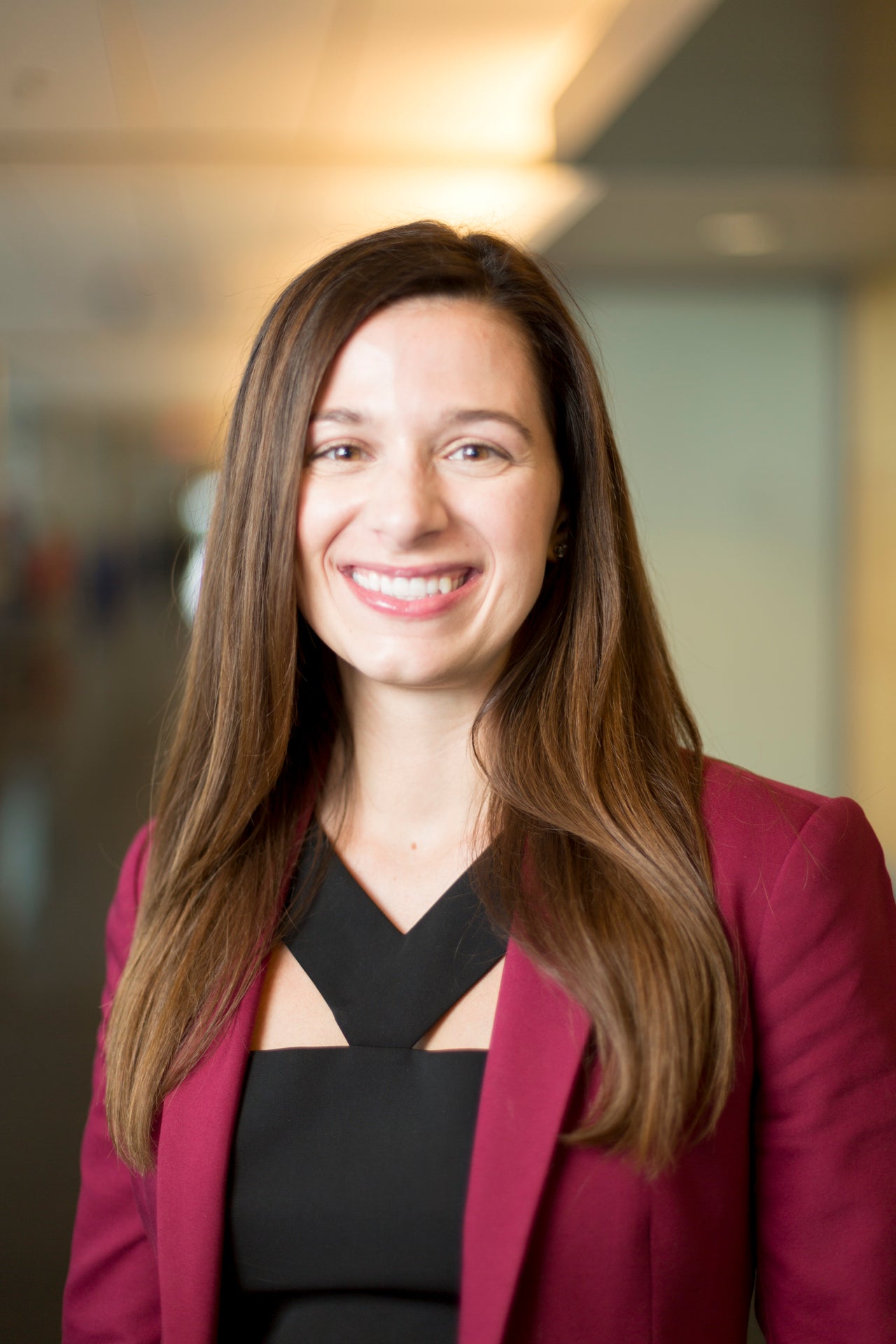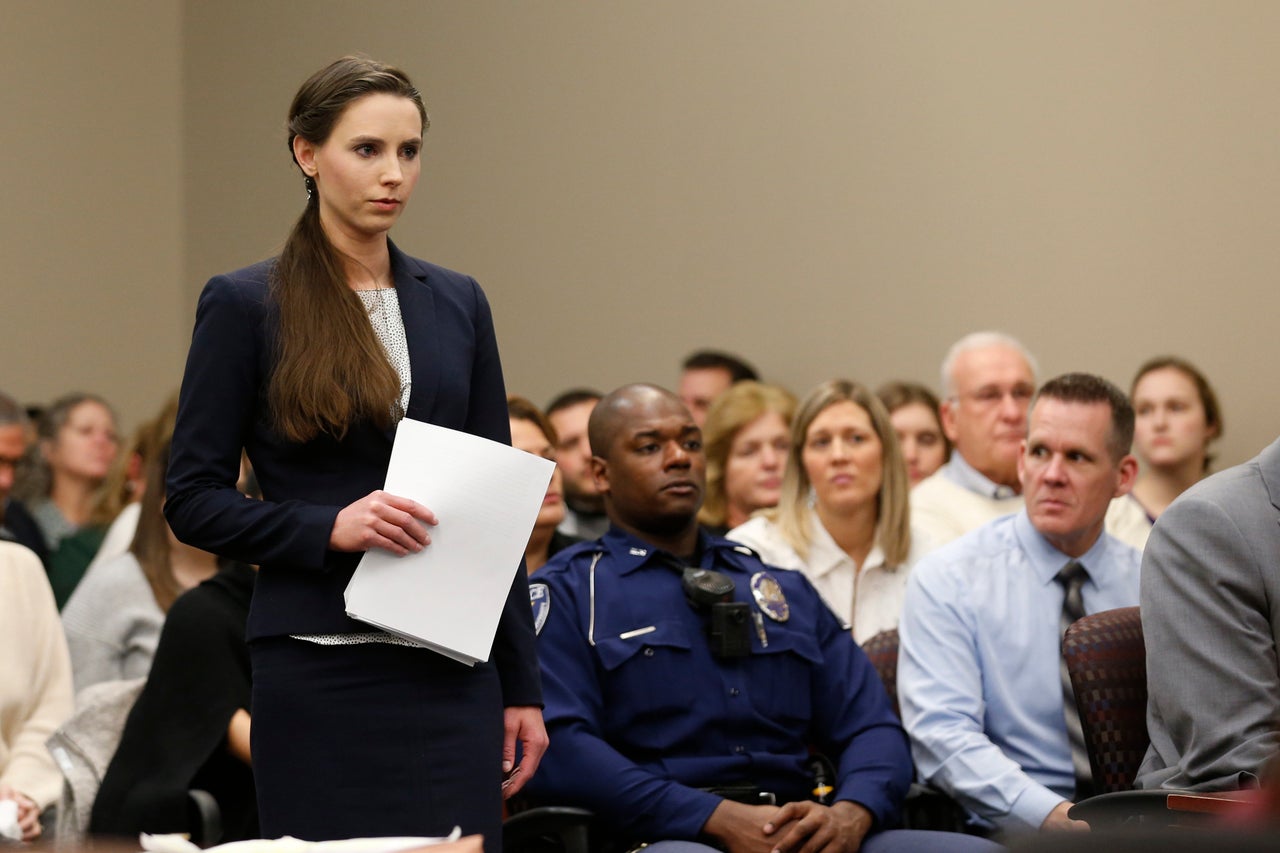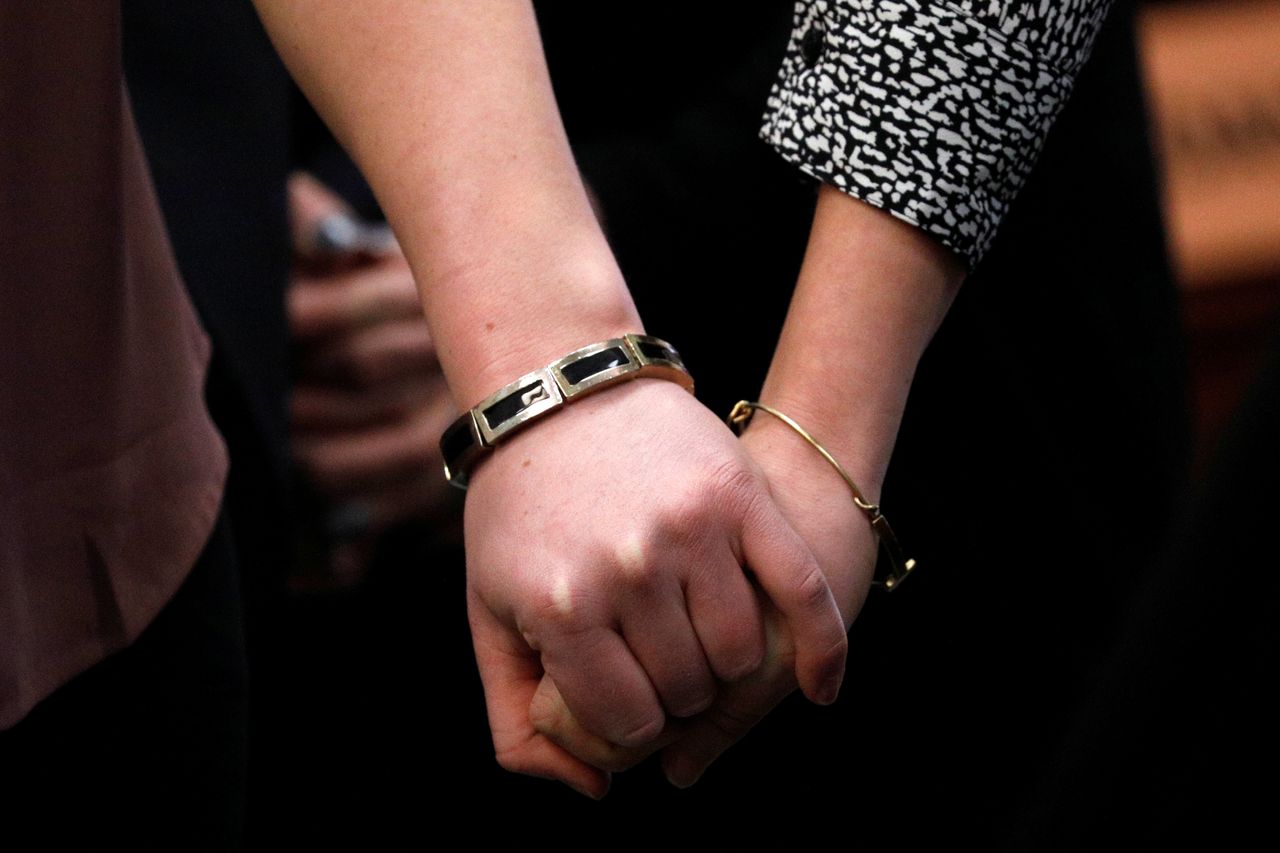This article is the sixth installment in the seven-part series “One Year Later: Larry Nassar And The Women Who Made Us Listen,” commemorating the seven days women stood in a Lansing, Michigan, courtroom last year and faced their abuser, former USA Gymnastics and Michigan State trainer Larry Nassar. “One Year Later” was produced by reporter Alanna Vagianos. Read more installments: One |Two | Three | Four | Five | Seven
Marisa Kwiatkowski had just enrolled in business school when she got the tip that would ultimately expose a serial abuser and bring to light one of the largest cases of willful institutional negligence in modern American history.
But today, a year after the sentencing of the criminal she helped to expose, she doesn’t think much about the grueling course load that accompanied months of difficult reporting and painful interviews with dozens of sexual assault survivors. Instead, she remembers the connections made between survivors, and the gratitude she felt to be trusted with their stories.
The 34-year-old is an investigative reporter at The Indianapolis Star, the paper that published the first investigation of USA Gymnastics’ failure to report accusations of sexual abuse and, later, the first story to directly implicate Michigan State University doctor Larry Nassar of serial sexual misconduct. Kwiatkowski joined the investigative team at the Star in 2013, where she uncovered abuse and neglect of vulnerable Americans in the welfare and social services systems. She’d just committed to earning her MBA when, while investigating why Indiana high schools hadn’t reported instances of school officials having sex with underage students to state authorities, a source suggested she look into USA Gymnastics’ handling of allegations of sexual abuse.
She and colleagues Tim Evans and Mark Alesia learned that the athletic organization practiced a policy that effectively suppressed allegations of sexual abuse ― and that young women had suffered deeply as a result. Within weeks of the subsequent investigative report, titled “Out of Balance,” a woman named Rachael Denhollander approached the Star with specific allegations against Nassar, a former team physician for USAG.

Kwiatkowski and her colleagues worked painstakingly with Denhollander to publish her account, which would ultimately lead to revelations that Nassar had abused hundreds of young gymnasts while employed by USA Gymnastics. Within two weeks of IndyStar reporting Denhollander’s allegation, 16 women filed criminal complaints against the doctor.
In a recent phone conversation and email exchange, Kwiatkowski described to HuffPost how she approached her interviews with the survivors, and which moments of the investigation stay with her today. This interview has been edited for clarity.
After you’d published the first two investigations ― one on how USAG’s policy could allow sexual abuse to continue unpunished, and another that directly implicated Larry Nassar ― did you have a sense of the scope of the abuse? When did that seem to reveal itself?
We knew prior to publication that three survivors had come forward and shared their stories with us. Within a week of publication of our article, we had more than a dozen other people reach out and share their stories with us. I think we came to understand pretty quickly that there was a significant scope of these allegations of abuse. In terms of USA Gymnastics’ role and what they may have known about him, they had acknowledged in our initial article about him that they had received allegations of athlete concerns, and they said they had reported them to law enforcement. It wasn’t until months later that we learned that USA Gymnastics had actually waited five weeks to report the allegations to law enforcement, and that in the interim they had conducted their own investigations into the allegations.
How do you approach interviews with survivors of sexual abuse?
My initial approach depends on the circumstances of the situation. But in general, I begin an interview by explaining what I am working on and why I want to speak with him or her. I let survivors know that I will be asking detailed questions so I can understand what happened. I make it clear that those questions aren’t because I don’t believe what the survivor is saying. That’s important, because many survivors I’ve interviewed tried to tell someone before, but they either weren’t believed or were discouraged from reporting it.
“Many survivors I’ve interviewed tried to tell someone before, but they either weren’t believed or were discouraged from reporting it.”
- Marisa Kwiatkowski
I let survivors know they can take a break or refuse to answer a question that makes them uncomfortable. I also explain that there is a difference between what I believe and what I can report. Then I ask if the survivor has any questions or concerns. Once we’ve had that conversation, I begin asking questions.
In this case specifically, did that approach evolve or change as you began to hear survivor after survivor recount similar stories?
My general approach remained the same. Each survivor had their own story, and it was important for me to hear each experience. As a journalist, I also have to examine each allegation individually.
Is it true that you’d enrolled in business school just before receiving that first tip?
I actually just finished.
Congratulations!
Thank you, I am thrilled.
What was that like? Did you ever consider putting that off?
It was a terrible idea. I’d already committed to starting it, so I just did it. I’ve gotten very good [at] time management. I would do a lot of scheduling out of my day to make sure I could fit that in.

The reporting required taking in a lot of difficult information. Obviously, the psychic burden of this is primarily on the victims. Can you describe that experience as a woman and a reporter focused on exposing injustice?
My investigations focus on people who have experienced trauma. Obviously, it’s about them and presenting the most accurate and comprehensive information possible. But we’re human beings too. My colleagues and I, we all had various things we could do or hobbies that we had that would take us out of thinking about those situations. For me, having business school was sort of a break from writing and listening to stories of trauma. Exercise, things like that. For everybody, it’s finding some sort of outlet that takes you out of that thought process.
You reported this story for more than a year. Looking back on that time, what stands out to you the most? Is there a detail or a moment that has stuck with you?
What comes to mind for me is just appreciation for all of the people who trusted us with their stories, who trusted us to present them to the world. When I think about a moment that sticks out to me, Rachael Denhollander, one of the Nassar survivors, met Becca [Seaborn], another former gymnast and survivor of a different individual’s abuse. They were two people who never would have met if not for our investigation. Seeing them make a connection and meet one another was a significant moment for me personally, just because we were building a support network for people through our reporting without really trying. I got a little emotional seeing the two of them connect with one another, because they were two strong, successful, independent women trying to make a difference.
“Sexual abuse and failure to report sexual abuse is not a gymnastics problem. It’s not a youth sports problem ― it’s a pervasive community problem.”
- Marisa Kwiatkowski
One year ago this week, Larry Nassar pleaded guilty to seven counts of first-degree criminal sexual conduct and was sentenced to 40-175 years in prison. Is this the type of outcome you hope for as an investigative reporter?
I think there’s still a lot of work to be done. You’re still seeing a lot of challenges and multiple organizations related to these issues. Sexual abuse and failure to report sexual abuse is not a gymnastics problem. It’s not a youth sports problem ― it’s a pervasive community problem. It’s hard for me to answer a question like that, because there’s still so much work that needs to be done and so much that needs to happen. How do you change behavior around such a pervasive issue?
You published your first reports months before the first rumbles of the Me Too movement. How has increased awareness of sexual assault and its consequences impacted your investigations? Do you find people are more interested in sharing their experience?
Everyone’s journey is so personal, so throughout my career in writing about topics like this, there have been people who are in a position where they are comfortable sharing their stories, and there are others who need to think about it and take some time, or others who aren’t quite there yet. There’s no one way that’s the right way, so we just try to meet people where they are and talk to them in a way that they’re comfortable with. The last thing we want to do is make a bad situation worse for people.
I would say more broadly, though, that more people ― at least the people that I connect with ― have been sharing their stories. The more people that talk about it, the less stigma there is attached to it.
“One Year Later: Larry Nassar And The Women Who Made Us Listen” is a seven-part series that commemorates the seven days women stood in Judge Rosemarie Aquilina’s Lansing, Michigan, courtroom last January and read powerful victim impact statements to former USA Gymnastics and Michigan State trainer Larry Nassar. Their words made history, forcing the country to finally listen and confront the abuse Nassar perpetrated. This series highlights the people who helped take Nassar down, as well as those he hurt for so long.
Need help? Visit RAINN’s National Sexual Assault Online Hotline or the National Sexual Violence Resource Center’s website.
